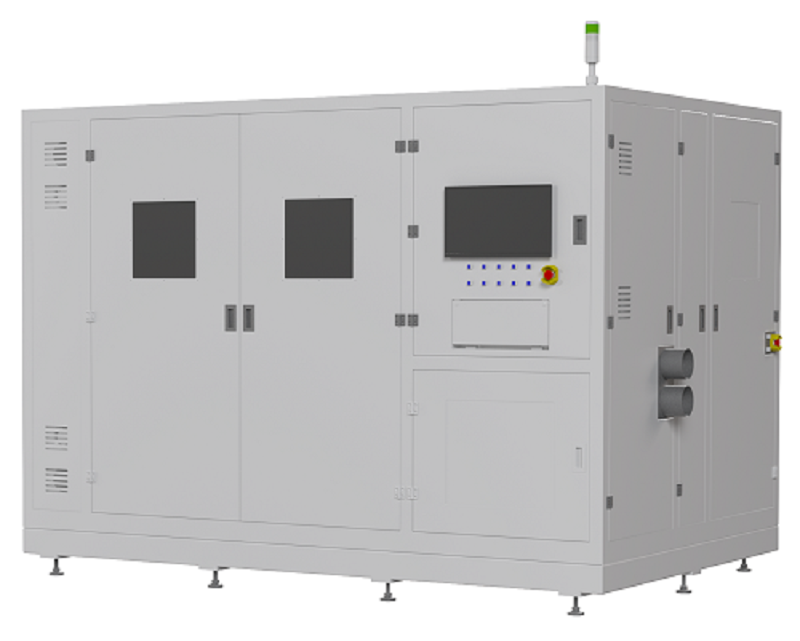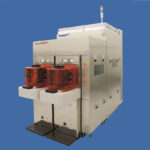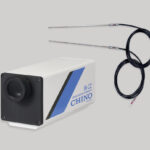ASIA ELECTRONICS INDUSTRYYOUR WINDOW TO SMART MANUFACTURING
Delta Wafer Edge Grinding Machine Suits Smart Manufacturing
Silicon wafers are experiencing price hikes as fabrication technology is making remarkable leaps. With high-capacity utilization, the wafer market continues to be valued at a whopping amount. Also, as global semiconductor demand grows and the smart manufacturing trend advances, semiconductor providers are demanding higher precision and efficiency. In response, Delta provides technological prowess that enhances wafer production quality and capacity, supercharging the semiconductor supply chain.
Silicon wafer manufacturing is the upper stream of the semiconductor supply chain. In this process, silicon ingots are sliced up into wafers. Then, the wafer surface is etched with a circuit design, becoming a semi-finished chip. The chip is then cut up into small dice for testing and packaging. Freshly sliced from ingots, a grinding wheel polishes the wafer to achieve extreme smoothness. This process is edge grinding.

Mainly, edge grinding is critical in the making of semiconductor chips. Specifically, high-quality grinding prevents cracked edges and concentrated thermal stress damage to wafers in later manufacturing processes. Additionally, it leaves a smoother surface for photoresist application or epitaxial layer deposition. Hence, the efficiency, precision, and stability of the grinding process directly impact wafer quality.
There are three main challenges with the previous edge grinding equipment. Firstly, controlling the precise contact position of the wafer and the grinding wheel is not an easy task. Secondly, engineers often devote considerable time adjusting edge grinding parameters to fit different wafer processes. Lastly, the need to acquire separate production and measurement machines may lead to long and inefficient production lines.
Integrates Hardware, Software Technologies
To enhance the efficiency, precision, and stability of wafer manufacturing, Delta’s Wafer Edge Grinding Machine integrates robust hardware and software technologies. The CAM software interface offers intuitive visualization with parameters for notch and single/double flat grinding paths. It reduces commissioning time by providing parameters such as wafer cassette paths, grinding wheel rotation speed, and grinding time. Moreover, technicians can directly monitor contact positions when changing grinding wheels or production lines on the main screen. Such functions greatly enhance the positioning precision of wafer grinding.

The hardware design of Delta’s Wafer Edge Grinding Machine also aims at higher precision and stability. The machine has a micrometer-scale industrial camera, which locates the center point of the wafer and ensures precise positioning during material feeding. It is possible to combine Delta’s roughness measurement module, which provides real-time monitoring of wafer roughness to achieve quality control. Also, Delta offers an edge profile measuring module, integrating manufacturing and measurement for a streamlined workflow. Generally, Delta’s Wafer Edge Grinding Machine supports seamless interaction with peripheral logistics systems. It links Automated Guided Vehicles (AGVs) and Overhead Hoist Transporters (OHTs) to enhance production efficiency.
Delta’s Wafer Edge Grinding Machine offers a pre-diagnosis system with built-in sensors that detect the grinding wheel condition. It alerts technicians before wear and tear, thus reducing defects and unexpected equipment failures. The fast wheel replacement feature reduces downtime by 80% and enables quick restoration of grinding equipment operation. In comparison, most equipment on the market requires adjusting the entire machine and tuning parameters repeatedly. The fast replacement feature increases equipment utilization.
In the wake of rising semiconductor demand, ensuring equipment quality is key to enhancing production efficiency. Delta’s Wafer Edge Grinding Machine meets the high standards of efficiency, precision, and stability in the semiconductor supply chain. Moreover, the intelligent integration of hardware and software boosts equipment capacity. Delta’s advanced products serve as solid support for a smart manufacturing future with the semiconductor manufacturing industry.




